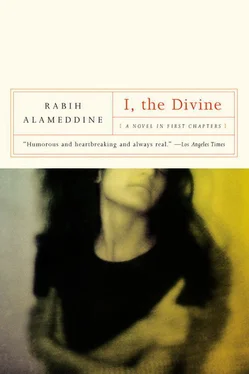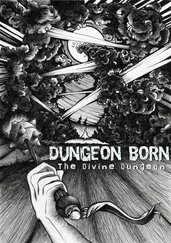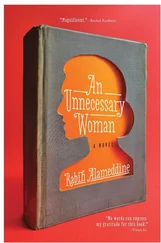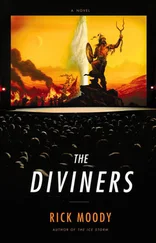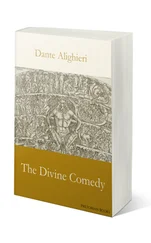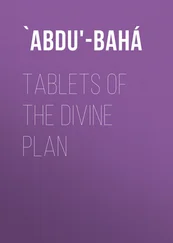Our first outing was to the Museum of Modern Art. The curator had set up the corridor with paintings by California artists, Northern California artists on one side and those from Southern California on the other. David and I looked mostly at the Northern California painters because of their use of colors. As we were walking, a painting on the opposite wall stopped me in my tracks. It called to me. “Sarah,” it said, “look at me.” It was a simple painting, of a style that had never appealed to me and which I had considered pointless. Yet I was rooted to my spot, spellbound. It was a medium-sized painting, thirty-two inches wide and thirty-eight inches tall. The main surface was smooth, no signs of brush strokes, the color a yellowish white — it was actually a mixture of zinc white, cadmium yellow, and a touch of raw umber — with a yellow rectangle, slightly off-center. Eight horizontal and four vertical black lines of varying lengths and thicknesses intersected at various points in the painting. I was not seeing a painting at all, but a three-dimensional mobile object, a live sculpture. The black lines moved back and forth across the space. The yellow square pushed farther back into the painting, creating a depth difficult to comprehend. Colors burst through in unexpected places. It was my introduction to John McLaughlin, the painter who opened my eyes.
David could not understand why I refused to move from my spot. “You like this painting?” he asked me.
“Yes. It’s beautiful.” I looked at him, hoping he would not think me a complete lunatic. I could not understand my awe.
“What do you like about it?” He looked at me, intrigued more by me and my reaction than by the painting itself. I tried to explain, surprising myself by doing an adequate job. I could not elucidate the spiritual and emotional aspects of the painting I saw, but I showed him how the lines moved, how the intersections of lines changed colors as you looked at them, even though they were painted black. By the time I was done, he agreed it was a good painting, saying he would consider putting it up in his house.
“I wish I could take it home,” I said. “I’d love to have it.”
“Even if you could,” he told me, “it would probably cost you a fortune.”
“It would be worth it. I’d pay anything for this painting. If the museum would sell it to me, I’d buy it in a second. It’s so grand.”
“You’re being silly,” he said. “This is a nice painting and it would look nice in your house, but why would you want to pay so much for it? It’s only paint on canvas. No, it says here it’s on Masonite. That’s probably cheaper. This isn’t something unique.”
“What do you mean it’s not unique? I’ve never seen anything like it.”
“No,” he said in all seriousness. “I don’t mean anybody can do the original, but anybody can copy it. You can do this. You’re an engineer. If you like this painting so much, why don’t you make one exactly like it? It shouldn’t be too hard. Don’t you think?”
I had never thought of that. I looked at the painting and began to wonder if I could copy it. I did not see why not. That was how it started.
It took me seventeen paintings to achieve an adequate copy of the McLaughlin. I tried painting it on canvas, on linen, on Masonite, and learned about texture. I tried different kinds of paints. I painted the square by covering areas with masking tape, by using a ruler, as well as freehand. By the tenth painting, I got the colors right, but it was only on the seventeenth, once I figured out the correct measurement and placement of the lines, that the painting worked. David was encouraging during the whole process. He could not tell the difference between each painting, but he was patient as I tried ineffectual explanations. He liked my first attempt as much as he did my seventeenth, so as a present, I gave him the first painting. I considered it the perfect gift. It meant the world to me at the time. From the moment I put paint on canvas, I realized a pleasure so primitive, so intrinsic to my nature, it is hard to fathom how I could have gone so long without it. I wanted David to share in my pleasure. I wanted him to have something of me in his house. Little did I know I would never see the painting again. Once the painting left my house, I lost it. David never trusted me enough to tell me where he lived.
David was instrumental in furthering my artistic career. He had been to a small gallery’s opening and told me about it. He suggested I give them a call since they seemed to exhibit abstract paintings. I spoke to the director, a wonderful woman, younger than I, who supported herself as a waitress and had converted a small garage into a gallery to show her friends’ artwork. I told her I was a beginning painter and would like to have her opinion on my work. She showed up within thirty minutes, saying she had nothing to do that afternoon. She loved all sixteen of the paintings. She wanted to exhibit all sixteen paintings, in chronological order, to show the progression, even though the final painting was an exact replica. The exhibit was not a resounding success, but it was not an embarrassment either. We placed the sixteen paintings in order, with an elaborate explanation of the methodology used. It may have not changed the art world, but it was instructional. Having my work exhibited changed my whole view of myself. I was no longer as lost. I had a purpose for waking up in the morning. And for that, if nothing else, I will always be grateful to David.
David suggested I take classes, that I might learn more about painting. I took an extension class at the San Francisco Art Institute. On the first evening, the teacher told us there were two ways we could not paint in his class: we were not allowed to paint diagonally and we were not allowed to paint black. For the life of me, I could not figure out why a painter — of middling success, I might add, but still a painter — would come up with such arbitrary rules. What was wrong with the color black? My first instinct was to leave the class and never come back. I stayed, though, and for the entire tedious semester I painted nothing but black diagonals. I had black diagonal lines crossing solid-colored canvases, black diagonal lines crisscrossing each other, black diagonals all over the place. The teacher never said anything to me the whole semester. At the end of term, I was the only student to receive an A for the class. No other student received a grade higher than a C. I did not take any other art class after that.
By the time I had my second exhibit, I had developed a distinctive painting style, consisting of large, square canvases with colored bars on a solid color background, always two colors, thinly painted. The owner of a New York gallery wrote saying he would show my work in his gallery for three weeks if I was able to pay the expenses. The deal was fairly straightforward; I would get a New York show, in a SoHo gallery no less, if I paid two thousand dollars plus the cost of shipping my paintings. I was hesitant at first, unsure if it was simply a vanity exhibit. I agreed on the deal because of two things: the owner said all proceeds from the sale of the paintings would go directly to me until I recovered my expenses after which he would take his commission, and David thought it was a great deal because of the publicity I would receive. We scheduled the show for January of 1995, just over two years after I began painting. Luckily, I ended up recouping a lot more than my expenses from the New York show. I had shipped my paintings by UPS and they destroyed two of them, one on the way to New York and the other on the way back. I had insured them, thereby receiving four thousand dollars from UPS. So, of course, on my resumé, I include UPS as a major collector of my paintings.
Читать дальше
